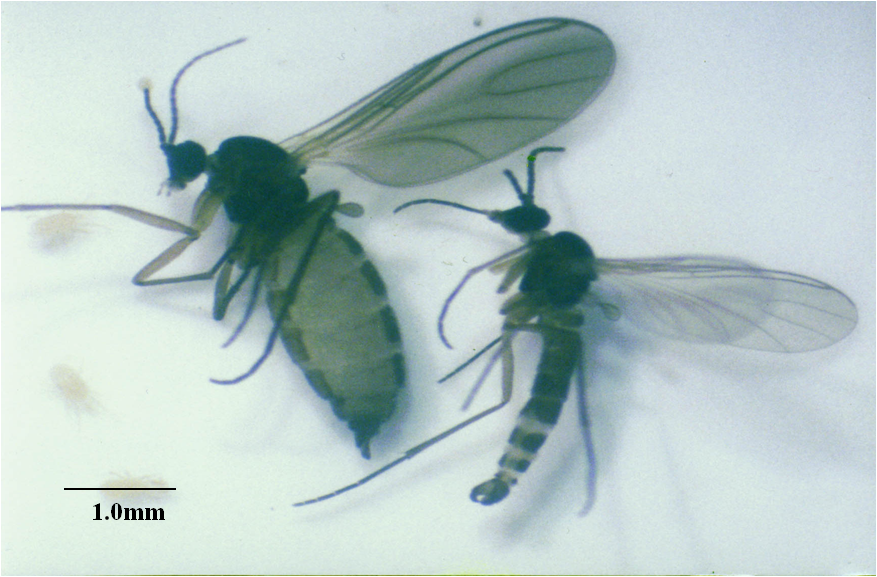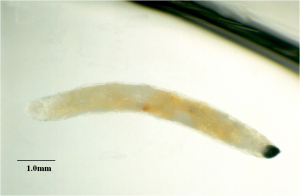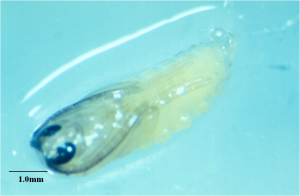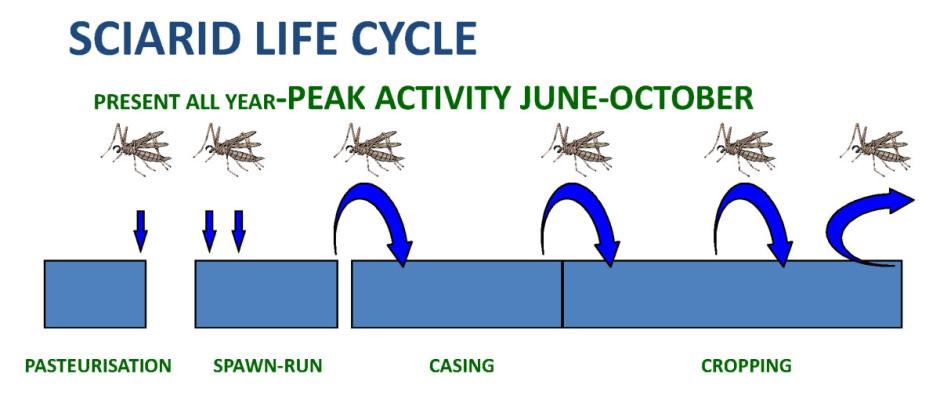Insect pests of mushrooms: Sciaridae
The most significant insect pests of mushroom cultivation belong to the Order Diptera (two-winged flies) comprising three families Sciaridae (sciarids), Phoridae (phorids) and Cecidomyiidae (cecids).
Sciarids

Adult flies may be present on mushroom production sites throughout the year but are most numerous during May - November. On average, a mated female can lay 150-170 white, oval eggs singly, or in groups within the growing substrate. Depending on temperature, these eggs will hatch within three to four days to produce larvae.

It has been demonstrated that a mean of one sciarid larva in 125g of casing causes 0.5% loss in total yield. As the cost for recommended sciarid control measures also accounts for 0.5% of the value of the crop, this represents an economic threshold for this pest.

Sciarid life cycle

- Adult flies may be present on mushroom production sites throughout the year but are most numerous during May – November.
- On average, a mated female can lay 150-170 white, oval eggs singly, or in groups within the growing substrate. Depending on temperature, these eggs will hatch within three to four days to produce larvae.
- The larvae feed on developing mycelium burrow into pinheads and small buttons forming a sponge-like mass.
- Mature larvae are approximately 8.0 mm in length and can remove mycelial attachments at the base of the stalk and in severe infestations may enter stalks and caps.
- Sciarid infestations in Phase I compost should be eliminated by efficient pasteurisation.
- Subsequent infestations are caused by adult females, which are attracted to the fermentation odours produced during compost cool-down.
- Environmental conditions during the spawn-running period facilitate the completion of a generation of sciarids within 2-3 weeks.